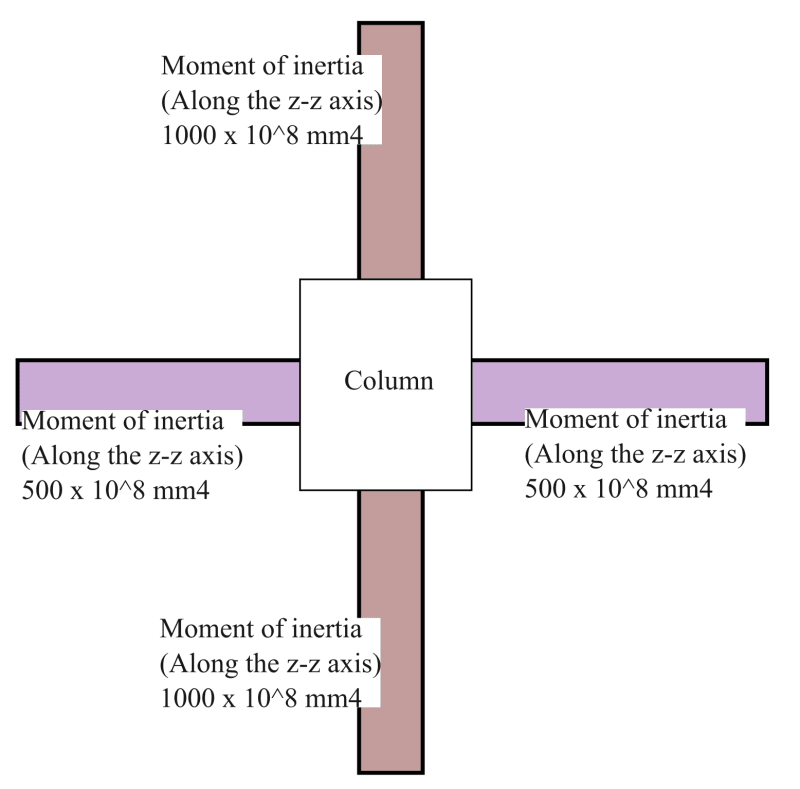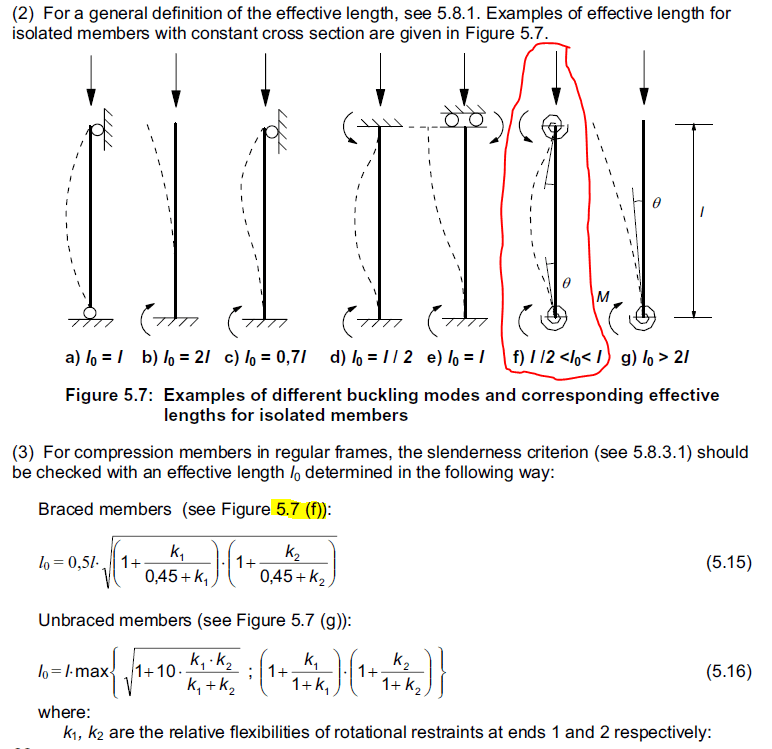Pretty Girl
Structural
- Nov 22, 2022
- 60
I'm trying to calculate the effective length of the column. The Eurocode 2 mentions the following equation

In that, we have to find out the "k" values so we can feed to the above equation.
The Eurocode 2 mentions this equation to calculate the relative stiffness k.

I noticed the "Background paper to the National Annexes to BS EN 1992-1 PD 6687-1:2010" mentions all the beams connected to the column should be summed up and considered etc.

But I noticed the calculations in design books only consider the beams with lowest moment of inertia. And usually summing up only two weakest beams.
What is the correct way? (picture below)
1. Sum up all the four beams regardless they are different in stiffness?
2. Sum up the two weakest beams? (purple colour beams) (lowest moment of inertia)?
3. Sum up the beams ? (2 connected to the weakest column axis) (still the purple beams in this case)


In that, we have to find out the "k" values so we can feed to the above equation.
The Eurocode 2 mentions this equation to calculate the relative stiffness k.

I noticed the "Background paper to the National Annexes to BS EN 1992-1 PD 6687-1:2010" mentions all the beams connected to the column should be summed up and considered etc.

But I noticed the calculations in design books only consider the beams with lowest moment of inertia. And usually summing up only two weakest beams.
What is the correct way? (picture below)
1. Sum up all the four beams regardless they are different in stiffness?
2. Sum up the two weakest beams? (purple colour beams) (lowest moment of inertia)?
3. Sum up the beams ? (2 connected to the weakest column axis) (still the purple beams in this case)




